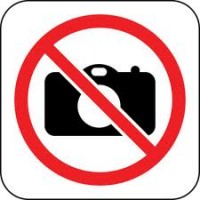If you’re anything like me, you at some point discovered a button alowing you to take panorama pictures. Perhaps you try it once or twice, and then you think ‘well, that was fun, now what?’ and promptly forget about it. You did, didn’t you? I knew it.
Finally, there’s a solution…
The main problem is that photo stitching software is an absolute beast to find, expensive, and often difficult to use. Then, finally, when you have managed to put together a good panorama, it’s impossible to show it to your friends easily. Scrolling back and forth on your screen is nifty enough, of course but… but… but… That’s so un-Web 2.0!
Luckily, there’s a solution. Think of it as Flickr and YouTube, but for panoramas: It’s free to use, has free stitching software, and all that. It’s best trick, however, is its panorama viewer: You can embed your panoramas into your website, YouTube-style. It’s all done in Flash, of course, and any standard browser with Flash built in (that’s 98.49% of you, but I’m just guessing. Proper statistics? Pah!) will be able to look at the panoramas without any hassle. Sounds simple, right? But the stupid truth of the matter is that there’s only one website out there that does this in any sort of satisfactory way…
The website in question is CleVR. No that’s not a typo: sure, they are clever, but the website is called CleVR. Confused? So am I, but then I never quite understood why Flicker is spelled Flickr, so perhaps I’m just dumb. Despite of my relative dumbness, however, I managed to figure out how to use the CleVR site: click a button to make your own panoramas.
The great thing is that there’s a lot of stuff you can do with panoramas as well. You’ve got your classic out-doorsy stuff:
But you can also get creative, like this kind of stuff:
Finally, you can add hot-spots to your panoramas, which means you can link several panoramas together. Try the next one, for example, you can click on some areas for more information, and on others to go to other panoramas. That way, you could conceivably show off your flat, for example, to your mom who lives in another country, and they can click on the doors to move from room to room. Nifty, no?
Anyway, I can’t encourage you enough to go have a look at CleVR. Upload a few panoramas, be amazed by the quality, and be elated that you’ve finally got a good way to share your panoramas on-line!






